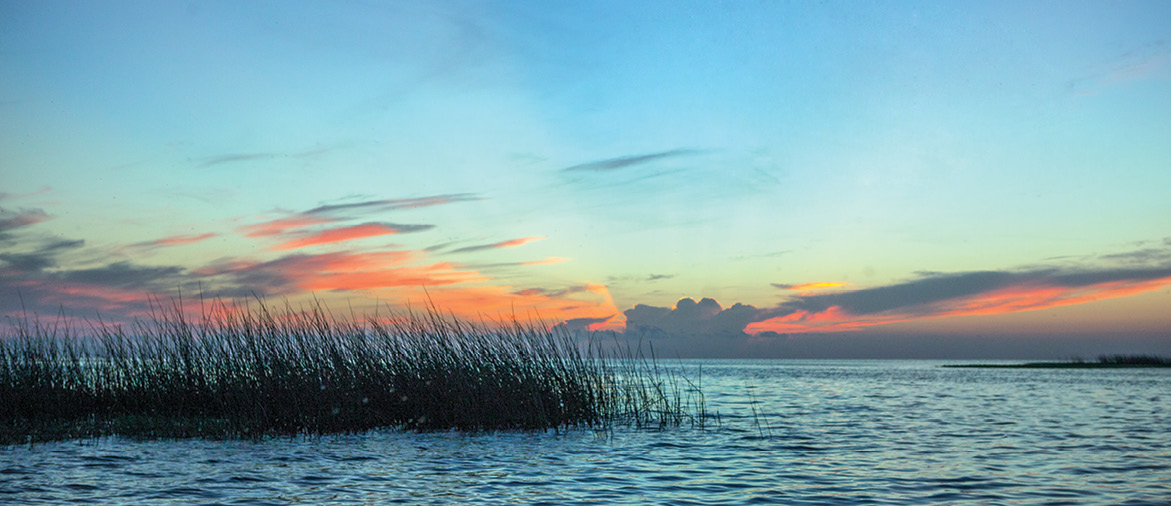Winning Elections in Florida

The latest thing in running for office in Florida is to not tell the voters what you stand for. It may be the best way to win an election. As an example, we give you recently elected Florida Gov. Ron DeSantis. If you followed the governor’s successful campaign last fall, you would have only a vague idea of what he would do if elected. He seemed to be a strong supporter of President Trump, wall and all, and had nothing negative to say about outgoing Gov. Rick Scott. A rational person would, therefore, assume that he did not believe in climate change, and saw nothing wrong with his predecessor’s steps, which did little to address the problems of Lake Okeechobee pollution and the effects on the estuaries on both coasts—especially in Martin County, as well as the ongoing neglect of the Everglades.
If you thought that, you were happily wrong. The Republican governor’s first months in office find him acting much like a Democrat—at least on those issues most important to those worried about Florida’s deteriorating environment. He has shown a determination to do something about the problems of Lake Okeechobee and South Florida’s threatened water supply. To say that environmental groups, most of whom opposed his election, are surprised, is to put it mildly.
Eric Eikenberg, chief executive of the Everglades Foundation, one of the most influential environmental groups, echoes the common theme: “This is the most optimistic we have been in decades —to have a governor who made cleaning up Everglades his No. 1 priority. We could not ask for anything more. Now we have to make sure that the legislature puts money behind those priorities and we can solve this problem.”
It was not just the new governor’s actions, but the speed of them, that has generated enthusiasm from environmentalists. DeSantis lost no time in asking for the resignations of the entire South Florida Water Management District board of directors. These are the people who make the decisions that affect the water flow from Lake Okeechobee. While theoretically independent, the members are appointed by the governor and therefore reflect his views. And former Gov. Rick Scott’s views were a reversal from those before him.
Under Gov. Charlie Crist there was a plan to buy a huge parcel of land from U.S. Sugar Corporation, the Clewiston-based company that for decades has been growing sugar on land directly south of Lake Okeechobee. That land was once the headwaters of the “River of Grass” and constituted the northern reaches of the Everglades. Back in the day of Gov. Napoleon Bonaparte Broward (1905 to 1909), the land was drained with a network of canals to make it rich soil for agricultural
purposes.
Because South Florida was lightly populated at the time, turning wetlands into productive farmland had limited effect of the Everglades. But as our area became the most populous part of the state and the demand for water grew steadily, so did the damaging effects of the stunted water supply.
The problem was compounded by the loss of wetlands, which were a natural cleansing agent for fertilizer polluted runoff from all the farms. South Florida found itself in a strange situation. Lake Okeechobee was surrounded by a dike after disastrous flooding in 1928. Water built up in the lake during the rainy summers, but when the lake became dangerously high, water that nature intended to flow south into the Everglades was discharged through canals east and west. Areas that did not need water, such as the Stuart area, got too much polluted water, while the Everglades to the south did not get enough.
The U.S. Sugar land acquisition plan would enhance the natural flow of water, in effect restoring a crucial part of The Everglades. But under Gov. Scott, the plan to purchase land died. A spokesman for U.S. Sugar said it decided not to sell after the state changed its mind about buying the land. But the truth is Gov. Scott nixed the deal by appointing his own people to the Water Management District.
In recent years, the situation became disastrous, at least for Martin County, as polluted water from the lake merged with seawater, producing an algae buildup, which killed sea life in an area where the economy depends on its reputation as a water wonderland. Gov. Scott’s administration worsened the problem by replacing management of the South Florida Water Management District with directors who favored the polluting agricultural interests over environmental concerns. Scott was obsessed with growth and new jobs. He showed little interest in people already living here. Eight years were wasted, and those years finally saw decades of neglect have their effect. In addition to pollution on both coasts opposite the lake, rising sea levels have been creeping inland, under our shallow crust of soil, encroaching on freshwater supplies for millions of people in Palm Beach, Broward and Dade counties.
Now all this history has been widely publicized. It is hard to live in South Florida without understanding at least the basics of the water problem. But one might think Gov. DeSantis, from far up in Daytona Beach, would not be acutely aware of the situation.
Wrong. So far.
Photo via
